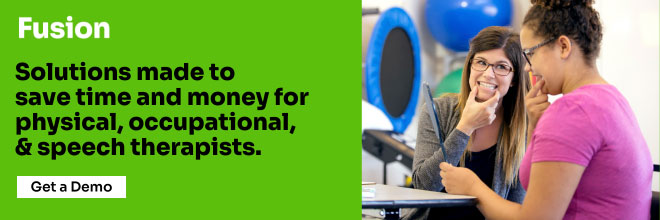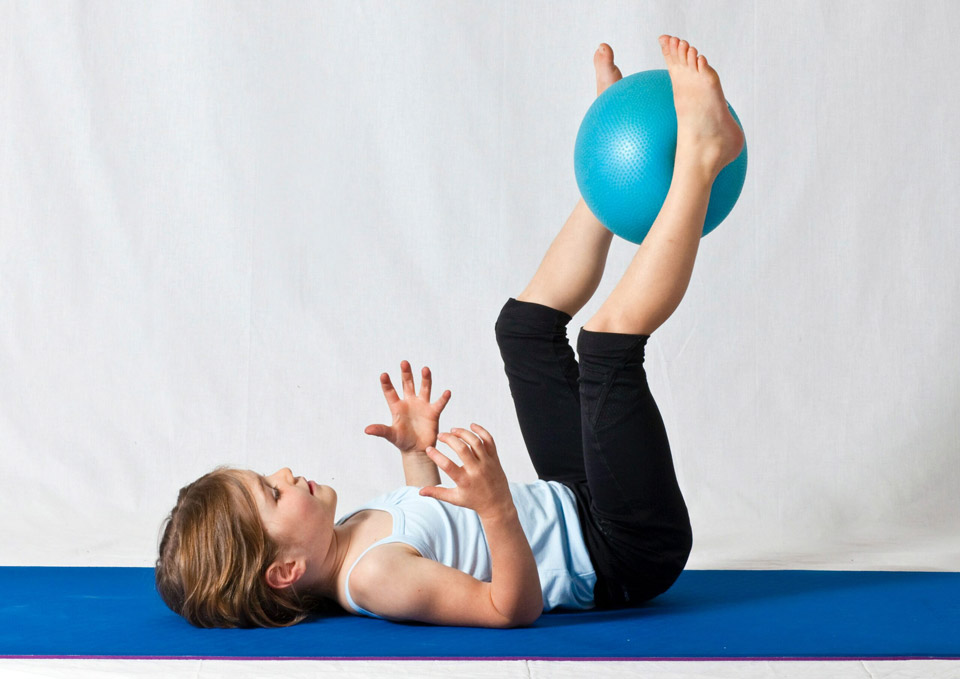Playing tag with friends, jumping rope on the playground, playing dodgeball in gym class — these are the joys of childhood that most kids take for for granted. But for little ones who have been sidelined by injury, illness, or a medical condition, many of these activities are out of reach. As a pediatric physical therapist, your work is essential in helping children with reduced physical abilities to reach their highest potential, allowing them to get back to the business of childhood to the fullest extent possible.
You are a master of disguise, cloaking an array of pediatric physical therapy exercises in the guise of engaging, play-filled activities. Kids are much more likely to actively participate if they’re having a good time. In this post, we share some of our favorite ideas for exciting pediatric physical therapy exercises designed to improve core strength, develop gross motor skills, and increase mobility.
Pediatric Core Strengthening Exercises
If a child’s muscles surrounding the abdomen, back, and pelvis are weak, everyday activities like playing on the playground, sitting at a desk at school, and getting onto and off of the floor are challenging. Here are some of our favorites courtesy of OT Mom Learning Activities and Pink Oatmeal. These core strengthening exercises are a blast for little ones to do!
- Stickers On Your Foot — This activity involves a balance ball and a sheet of stickers. The child puts as many stickers as they’d like onto the bottoms of their feet. Sitting on a balance ball, facing the wall, they take the stickers off of their feet one at a time, sticking them onto a blank piece of paper that’s hanging on the wall. Staying balanced on top of the ball while reaching down to the bottoms of the feet strengthens the core muscles.
- Stuffed Animal Elevator Rides — Time to take some stuffed animals to the top floor with this core strengthening activity! This activity begins with the child sitting on a balance ball with an empty plastic container beside them. Starting with a small pile of stuffed animals, the child places one stuffed animal at a time onto the top of their foot, raising it level with the top of the empty container, and then dropping it in. They’re done once all of the animals make it to the top!
- Make a Basket — This activity presents a fun challenge while working the abdominal muscles. Start out with the child laying down on their back. Place a shallow basket down by their feet. Instruct them to raise their legs up to near vertical. Place a bean bag in between their feet and instruct them to lower it down slowly into the basket. Set a goal for how many they can successfully lower down into the basket, raising the number each time you do the activity.
- Snake Curls — Playing the role of a snake ready to strike is always a hit with kids. This activity involves the child laying down on their back with knees bent and with a bean bag in between their knees. (Their hands will be down at their sides.) With plenty of hisses as they go, the child will raise their head while slowly raising their feet off the floor to bring the beanbag toward their nose. If you have an old plastic recorder laying around, you can even pretend to be the snake charmer!
Gross Motor Skills Exercises
Jumping rope, riding a bike without training wheels, running, and kicking all require strong gross motor skills. Gross motor skills exercises are designed to develop the large muscles of the body that facilitate the everyday movement most of us take for granted. Some of our top pediatric physical therapy activities in this area come from the NAPA Center and Little Steps.
- Chasing Bubbles — What kid doesn’t like chasing down and popping soap bubbles? This gross motor development activity disguised as a game works the major muscles as the child tracks the unpredictable movements of bubbles as they float by.
- Simon Says — For generations, this imitation-based game has been delighting little ones. Kick off by asking the child to point to different body parts or mimic body poses you’re demonstrating. This simple activity develops body awareness and movement planning.
- Playing Catch — Playing catch is just not a Sunday afternoon pastime anymore! It’s a great way to develop gross motor skills. Start off slow, using a soft foam ball. Eventually work up to using smaller tossable objects.
- Bear Walk — Pretending to be a ferocious beast is something most kids love. Walking like a bear on all fours is a great way to build upper body strength, body awareness, and coordination. When you’re ready for something new, switch critters — try a crab or snake.
Mobility Exercises
For kids suffering from cerebral palsy, muscular dystrophy, and other medical conditions, a lack of mobility is one of the most common symptoms. Poor mobility often stems from muscle weakness. With pediatric physical therapy activities that feature game-like components, you can target mobility issues in a way that’s lots of fun. Hat tip to Flint Rehab and Adaptive Yoga For Multiple Sclerosis for these ideas.
- Adapted Yoga — Yoga isn’t just for those who can touch the backs of their ears with the soles of their feet. The practice and benefits of yoga are open to everyone, even those with significant mobility impairments. Adapted yoga offers a range of modified stances based on traditional yoga poses like warrior and side stretch. With the strategic use of a chair, wall, and other props kids with mobility constraints can use yoga to stretch, relax, and calm.
- Dancing — Once you’re all stretched out at yoga, it’s time to dance. Dancing provides lots of exercise for a wide range of muscle groups, and it’s fun for kids. If you pick catchy, well-loved tunes like Macarena or the Electric Slide, the kids may not even realize they’re in PT! Freeze dance is a fun variation that keeps their attention as they listen for the music to start and end. When the music stops, they freeze in place, when it starts back up again, it’s time to boogie!
- Balloon in the Air — This one’s simple. Toss a balloon in the air and instruct the child to keep it afloat. Make it more challenging by moving the balloon away from the child or modify the rules to allow for feet-only play.
- Pool Time — Getting into the pool is a two-for-one. The buoyant force of the water relieves pressure on the joints, allowing kids to focus more on the mechanics of walking. Water also provides more resistance than air, making walking in the pool a good workout for the leg muscles. Having the child hold onto a float and kick with the feet is another pool-based exercise worth trying.
Want more ideas? Check out these 33 pediatric therapy social media accounts!

